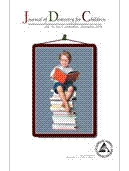
Association Between Duration of Breastfeeding and Malocclusion in Primary Dentition in Brazil
Methods: A cross-sectional observational study was conducted with children of both sexes, aged 30 to 48 months, who attended to a dental program for maternal and child care. The mothers completed a questionnaire about the form (exclusive breast-feeding or not) and duration of breastfeeding, their children's non-nutritive sucking habits, and their sociodemographic information. The clinical examination was done by a calibrated examiner in the knee-to-knee position and under indirect light to evaluate the primary occlusion. Pearson's chi-square test or Fisher's exact test and Poisson regression were performed for statistical analysis.
Results: Over 45 percent of 252 children who were evaluated had malocclusion, such as anterior open bite (13.6 percent), posterior crossbite (3.6 percent), anterior crossbite (2.8 percent), midline shift (21.5 percent), overbite (19.8 percent), and overjet (32.9 percent). Children who were exclusively breastfed for less than six months had a 50 percent higher prevalence of anterior open bite (P =0.009) compared to those who had exclusive breastfeeding for more than six months.
Conclusion: Exclusive breastfeeding for less than six months was associated with anterior open bite. The other malocclusion types were not associated with the time and type of feeding the children received in the early phase of the primary dentition. (J Dent Child 2019;86(1):17-23)
Received August 29, 2018; Last Revision November 20, 2018; Accepted January 3, 2019.
Keywords: BREASTFEEDING; CHILDREN; HABITS; MALOCCLUSION; PRIMARY DENTITION
Document Type: Research Article
Affiliations: 1: Adjunct professors, Department of Pathology and Dentistry Clinic, School of Dentistry, at the Federal University of Piauí, Teresina, Piauí, Brazil 2: Master's Degree candidate, Department of Pathology and Dentistry Clinic, School of Dentistry, at the Federal University of Piauí, Teresina, Piauí, Brazil, Email: [email protected] 3: Professor, Department of Pathology and Dentistry Clinic, School of Dentistry, at the Federal University of Piauí, Teresina, Piauí, Brazil 4: professor, Center for Studies and Research in Rehabilitation Prof Dr Gabriel Porto / School of Medicine, Unicamp, Campinas, São Paulo, Brazil
Publication date: 01 January 2019
- Acquired after the merger between the American Society of Dentistry for Children and the American Academy of Pediatric Dentistry in 2002, the Journal of Dentistry for Children (JDC) is an internationally renowned journal whose publishing dates back to 1934. Published three times a year, JDC promotes the practice, education and research specifically related to the specialty of pediatric dentistry. It covers a wide range of topics related to the clinical care of children, from clinical techniques of daily importance to the practitioner, to studies on child behavior and growth and development. JDC also provides information on the physical, psychological and emotional conditions of children as they relate to and affect their dental health.
- Information for Authors
- Submit a Paper
- Subscribe to this Title
- Membership Information
- Information for Advertisers
- Ingenta Connect is not responsible for the content or availability of external websites
- Access Key
- Free content
- Partial Free content
- New content
- Open access content
- Partial Open access content
- Subscribed content
- Partial Subscribed content
- Free trial content